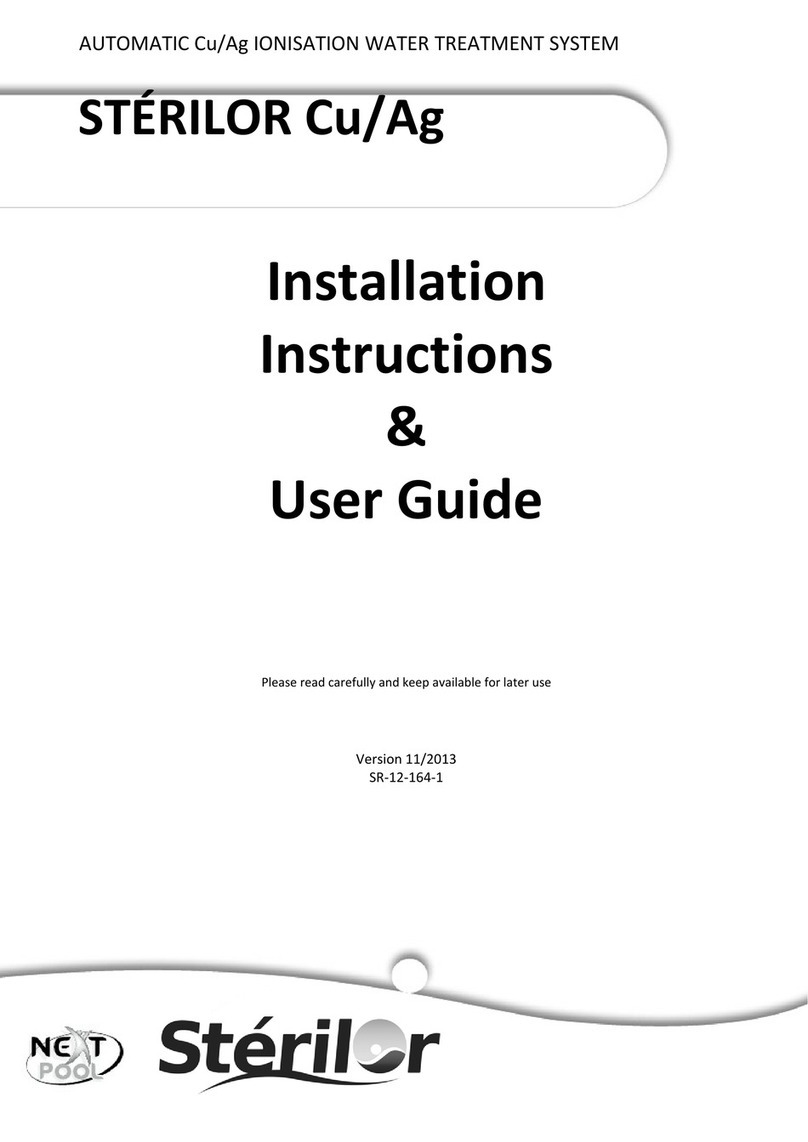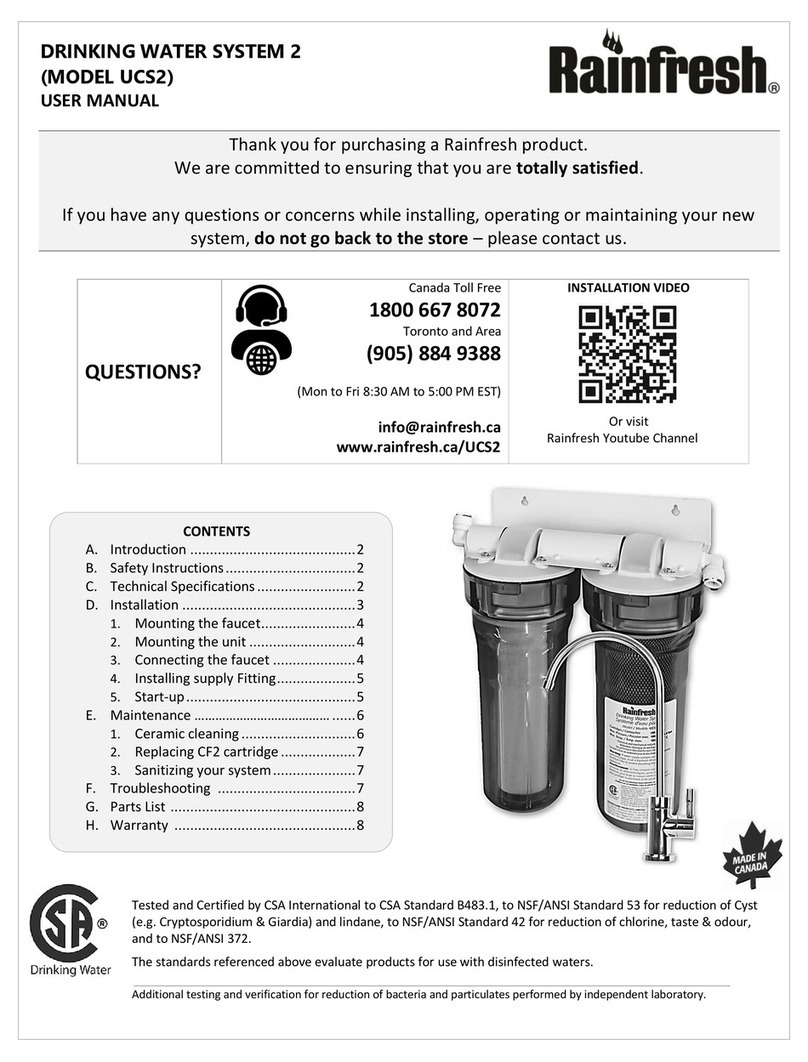
6 - SG2 Pure Water System Operation and Maintenance Manual
13. Soap Residue
A common issue encountered when transitioning
buildings from traditional window cleaning methods
to pure water cleaning is soap residue. After the initial
cleaning with pure water, small white or gray spots
and runs will be seen on the glass after drying. Most
often this is soap and or detergent residue actually left
behind by previous cleanings and brought out of the
pores of the glass and out from under the side gaskets
and seals of the glass on commercial installations
by the pure water cleaning process. This condition is
generally rectied by repeating the pure water cleaning
process until it is eliminated.
14. Shutdown
1. Turn o pump, disconnect from power supply.
2. Shut o ow to the pole tubing, then fully open
the bypass valve and let the system ush source
water through the carbon and the RO lter housing
for 3-5 minutes.
3. Turn supply water o. Disconnect source water hose.
4. Optional – Open RO only valve to drain water from
housings for transport.
15. Maintenance
Your SG2 system requires little maintenance to
operate at peak performance. As stated above, a
forward ush of your system after each use will help
the ROs remain free of contaminants.
Periodically check the TDS of the puried water with
the provided hand held meter. When the TDS levels
reach unacceptable levels for your application (ABC
suggests 10ppm or less for window cleaning and
40ppm or less for cleaning opaque surfaces) you
should replace both your carbon/sediment lter and
your DI lter together.
abc also recommends that you lubricate your wheels
several times a year (or as necessary) to ensure
proper mobility for your system.
Periodically check the electrical wiring and system for
damage. Test your GFCI by pushing the white button
to test the shut o and the red button to reset the
system.
12. Using A WaterFed Pole
®
Once your SG2 system is hooked up, and you have a
WaterFed® pole connected to the hose, you’re ready
to clean windows.
Always begin by cleaning the top row or highest
windows rst, including scrubbing the frames. Work
the WaterFed® pole up one side of the frames, across
the top, and back down the other side. Scrub the glass
in an up and down motion, moving the pole the entire
length of the glass with each stroke if possible. Return
the pole to the top of the window, and with a side to
side motion, allow rinse water to ow completely down
the surface of the glass.
Frame rinsing may not be required. If the height of the
glass and the weight of the pole allow for it, hold the
brush slightly o of the surface of the glass to rinse. If
this is not possible, move the pole side to side slowly
with the brush on the glass at the top, and let the water
ow down the glass to rinse.
Once you have completed the top row or highest glass
on one side of the building, repeat these steps for each
tier or level of glass, working your way down. Providing
a good initial scrubbing on the glass, followed by
a complete rinse, will ensure that the glass dries
completely spot-free.
Pure water is a great natural solvent for many soils. In
some cases where there are heavy soils, a pre-soak
or even a double scrub and rinse may be needed to
achieve optimal results. The agitation of the brush,
coupled with the ow of water through the brush when
scrubbing, should break down and suspend most soils,
readying them for complete removal via the rinse step.
As with any new procedure, practicing the use of your
WaterFed® pole is the best way to achieve optimal
results.

























